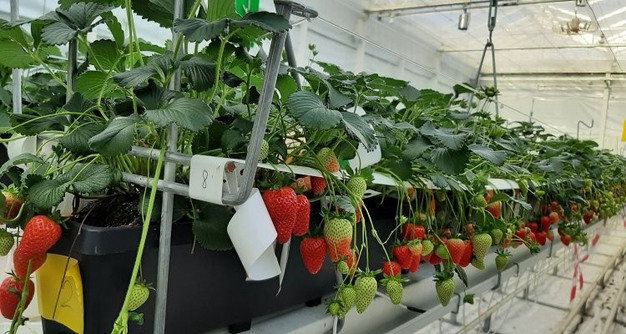Traditional strawberry varieties for the greenhouse have two significant production peaks. To achieve this, the plants need a cold period in winter and then warm daytime temperatures for a longer period of time. Low-chill varieties do not need that cool period. In addition, harvesting can take longer in the spring/summer because the plant can form new trusses in spring. The varieties also suffer less from mildew in the spring, as discovered by the Greenhouse Horticulture and Flower Bulbs Business Unit of Wageningen University & Research.

WUR investigated two low-chill varieties: Inspire (from The Greenery) and Fandango (from Fresh Forward). The strawberries were placed in the trail greenhouse in Bleiswijk last winter. This greenhouse is equipped with active dehumidification and three screens (including one transparent energy screen). It was an unlit cultivation. A constant temperature of 15 degrees Celsius was maintained during the day and at night from December to February.
Normally, strawberries are grown with a clear distinction between day and night temperatures. That is why growers use heat during the day and open the windows in the greenhouse in the evening to get rid of the heat. In the trial at WUR, the heat was kept in as much as possible by using the screens and also closing the energy screen during the day at low light levels.
The research shows that the low-chill varieties in the trial greenhouse produce approximately as much as the same varieties at growers until July but with much less energy input. By use of a blackout screen - the plants were given a short day even in the summer. In that way, the low-chill strawberries produced until the end of September yield approximately 2-4 kilos extra per square meter. This trial shows that low-chill varieties can achieve a much longer picking period with less energy input than traditional 'June-bearing' crops; the exact savings will be announced soon.
Low-chill varieties are also said not to suffer from mildew. During WUR's research, it turned out that both varieties were indeed not affected by this fungal disease during the first few months. Mildew then appeared, and intervention had to be taken with regular treatments with crop protection products.
Source: wur.nl
